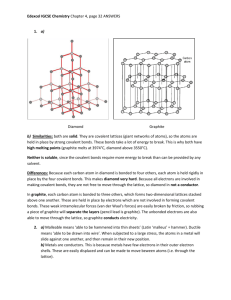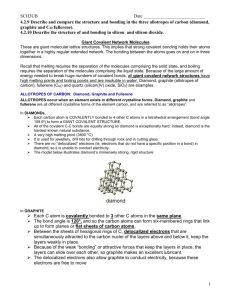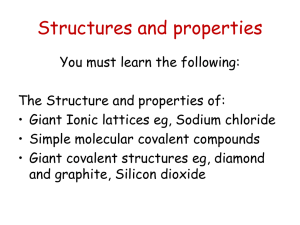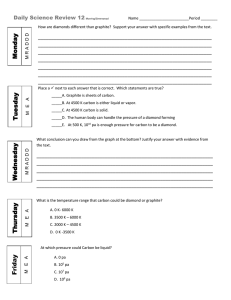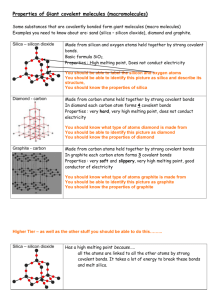Giant Covalent Compounds
advertisement
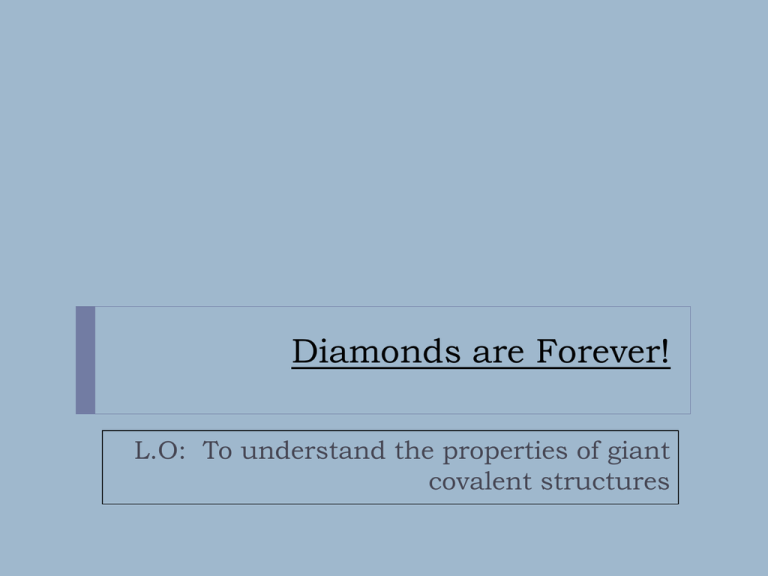
Diamonds are Forever! L.O: To understand the properties of giant covalent structures Why is diamond so hard? Why can you melt diamond? If diamond is covalent why isn’t it a liquid or gas? Why isn’t graphite called carbon when it is actually just carbon? Why does graphite conduct? Make a carbon molecule? Can you turn it into a macromolecule. C C C C C Giant covalent structures This is diamond what sort of properties do you think it will have? In some substances, millions of atoms join together by covalent bonding. This produces giant covalent structures, (macromolecules) – a 3D structure not molecules. Cut out each of the diagrams and work out which are: Diamond (Lots of atoms joined) Graphite (forms layers) Silicon dioxide (SiO2) Buckminsterfullerene (ball structure) You should have a diagram of a molecule and giant structure for each. List some properties that you think each macromolecule will have The structure of diamond Diamond is a rare form of carbon in which each atom is covalently bonded to four others. This pattern arrangement is repeated millions of times to create a giant lattice. C C C C C Properties: Hard, very high melting and boiling point, shiny and transparent, unreactive The structure of graphite Graphite is a much more common form of carbon. in which each atom is covalently bonded to three others, leaving one free bond. This forms rings of six atoms, creating a giant structure containing many layers. These layers are held together by weak forces of attraction. C C C C weak forces of attraction Properties of graphite free electrons (also called delocalised electrons) These allow it to conduct electricity ( as a flow of electrons = electric current) layers slide over each other easily Uses: in pencils (the hardness is altered by changing the clay and graphite ratio) Why is graphite sometimes used as a lubricant? Other allotropes of carbon Other allotropes of carbon have been discovered in the last 30 years. They are large but not really giant structures. One allotrope is buckminsterfullerene. It contains 60 carbon atoms, each of which bonds with three others by forming two single bonds and one double bond. These atoms are arranged in 12 pentagons and 20 hexagons to form spheres, which are sometimes called ‘bucky balls’. Hard, high melting and boiling point C C C C Sand Sand is an impure form of silicon dioxide (quartz). It has a giant covalent structure with certain similarities to diamond. Each silicon atom (2.8.4) is bonded to four oxygen atoms, and each oxygen atom (2.6) is bonded to two silicon atoms. O O Si O O Effect of structure on properties Giant Covalent properties Giant covalent structures have high melting points Many are very hard Most do not conduct electricity or dissolve in water They are chemically unreactive
